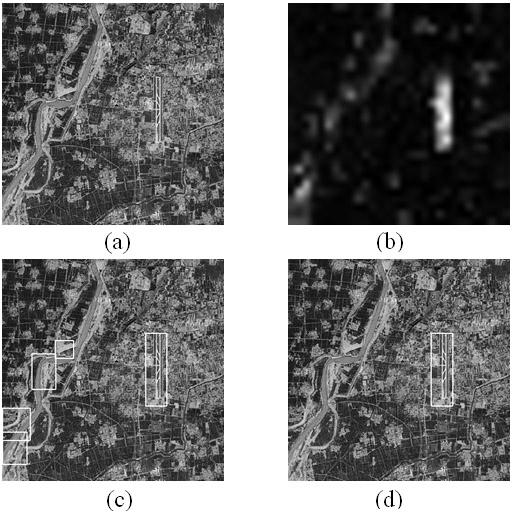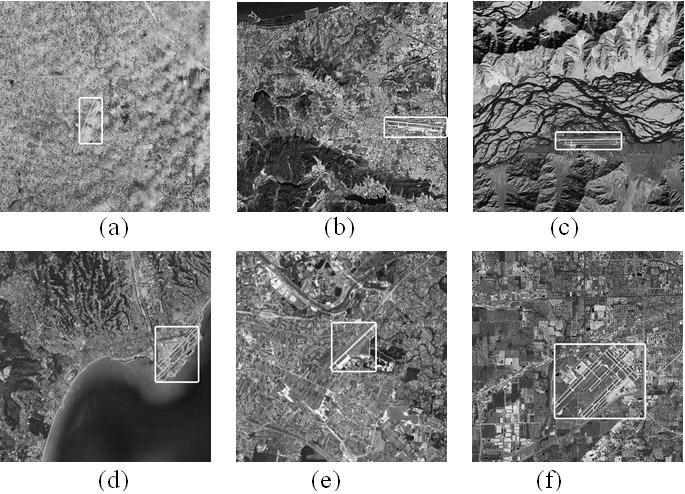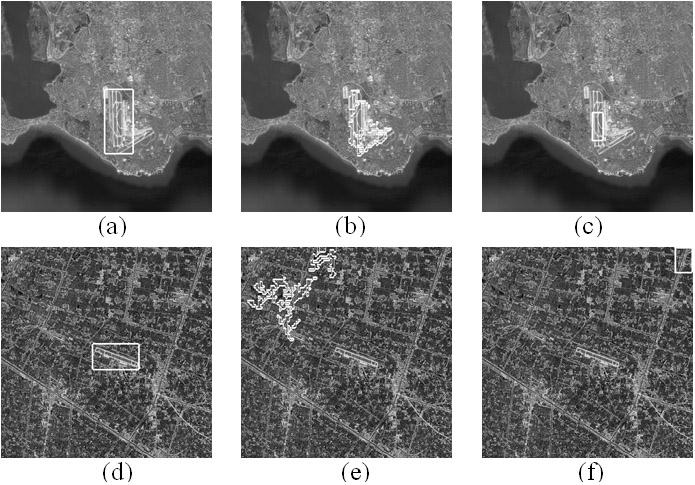Method for detecting and identifying airport target by using remote sensing image based on selective visual attention mechanism
A visual attention and random field technology, applied in the field of remote sensing image processing, can solve the problems of inaccurate airport positioning and reduce computational complexity, etc., and achieve the effect of solving inaccurate positioning, reducing computational complexity, and fast speed
- Summary
- Abstract
- Description
- Claims
- Application Information
AI Technical Summary
Problems solved by technology
Method used
Image
Examples
experiment example 1
[0053] Experimental example 1. Some recognition results
[0054] In the method of the present invention, there are four main processes from the input to the saliency map, the candidate area, and the final recognition area, and each process has a corresponding result map, such as figure 1 shown. In this example, the parameters are taken as and . From figure 1 In (b), it can be seen that the airport area has a very high salience and is identified as the first candidate area. Although the existence of rivers around the airport makes some areas along the river also determined as candidate areas, the identification of SIFT features , which can well distinguish these candidate areas from the airport area. We show some other recognition results as figure 2 .
experiment example 2
[0055] Experimental example 2. Method comparison: recognition rate, recognition false alarm rate and running time
[0056] The method of the present invention is compared with the method of document [3] and document [5], and part result is as follows image 3 shown. Document [3] is a representative of the algorithm based on edge extraction. It performs edge detection on the input image, then removes small and curved edges and performs Hough transformation to obtain long straight lines, and substitutes the texture of the area near the straight line into the support vector machine. (Support Vector Machine, SVM) recognition. The method in literature [5] is a representative of the region segmentation algorithm. It first performs region segmentation on the image to be recognized; then extracts SIFT feature points from the entire image and clusters them according to the density of SIFT feature points; next, each The position of each group corresponds to the result of area segmenta...
experiment example 3
[0061] Experimental example 3. ROC curve performance test
[0062] ROC curve (receiver operating characteristic curve curve) [19] It is often used to measure the detection efficiency. Its abscissa is the detection false positive rate (False Positive Rate, FPR), and the ordinate is the detection accuracy rate (True Positive Rate, TPR). The detection accuracy rate here is different from the previous recognition rate. It is aimed at the problem of whether there is a target, and does not care whether the position of the target is correct. The detection false alarm rate is also relative to the detection accuracy rate. Draw the FPR and TPR under different judgment standards into a curve, the larger the area under the curve, the higher the detection efficiency. We draw the ROC curves of the three methods according to their respective discriminant criteria as follows: Figure 4 shown. From Figure 4 It can be seen that the ROC area of the method of the present invention is sign...
PUM
 Login to View More
Login to View More Abstract
Description
Claims
Application Information
 Login to View More
Login to View More - R&D
- Intellectual Property
- Life Sciences
- Materials
- Tech Scout
- Unparalleled Data Quality
- Higher Quality Content
- 60% Fewer Hallucinations
Browse by: Latest US Patents, China's latest patents, Technical Efficacy Thesaurus, Application Domain, Technology Topic, Popular Technical Reports.
© 2025 PatSnap. All rights reserved.Legal|Privacy policy|Modern Slavery Act Transparency Statement|Sitemap|About US| Contact US: help@patsnap.com



